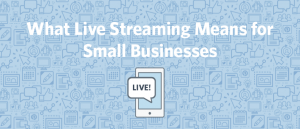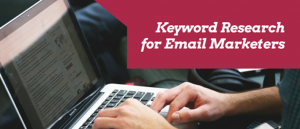Facebook ads are an excellent way to drive more traffic to your website and generate more leads for your business. However, setting up a few campaigns and just letting them run on their own won’t garner you much of either.
Aside from keeping an eye on your cost-per-click and cost-per-lead metrics, Facebook ad campaigns can seem like a lot of guess work. You must guess what type of ad content will work best, which audience targeting methods will get your ads in front of the right people and what copy will resonate with them the most.
But running optimized ads shouldn’t be a guessing game. There’s a science to it. You need to run tests, collect data, interpret that data and its implications for your ad campaigns, and then, of course, put all of those takeaways into effect. This begs the question: What tests can you run to learn whether your hunches are going to produce the best results?
This is where the power of A/B testing (also known as “split testing”) comes into play. Let’s take a look at 15 ideas for tests that will collect the right data and improve the performance of your Facebook ads.
Testing Your Ads
1. Short vs. long copy
Although Facebook already limits the amount of text in your ad, you should test whether shorter or longer copy appeals more to your audience within Facebook’s constraints. On the one hand, shorter copy can evoke a sense of suspense or curiosity. However, longer copy can often provide more clarity and context.
As an example, here’s a single-word ad (yes, really) that went for suspense over clarity:

2. Leading with an action verb vs. without one
One of the principles of good ad copywriting is to make it about them, not you. This can often be accomplished by leading with action verbs. Doing so makes it crystal clear what action you want the viewer to take.
In this example from Oyster, both sentences begin with an action verb – “See” and “Start”:

3. Question vs. no question
Using questions in your ads is a great way to increase engagement (this works especially well for newsfeed ads, since people can “Like” or comment on them). Try running a test with one ad that poses a question and another that doesn’t, then look at which drives more clicks and conversions.
4. Use of the word “free”
Long debated in the marketing world is the question of whether the word “free” in your advertising copy will lead to increased conversion. I say, test it out for yourself!
5. Use of social proof
Sometimes the best way to incite action is to tell your audience that “everyone else” is doing it. This can mean showing off the number of customers your business has, or the number of people who have downloaded the eBook you’re promoting.
In this example, Hootsuite encourages the viewer to “join 11 million+ professionals using Hootsuite”:

6. Generic stock photo vs. custom-designed image
Images play a key role in advertising, particularly within the Facebook newsfeed where they’re displayed prominently. So does a generic stock photo do enough to catch your audience’s attention? Should you try using an image more customized to your offer instead?
You should also look at ways to make your stock or custom images a little more personal. (Check out these simple photo editing hacks for marketers.) For example, look at how Sprout Social works the title of their offer into their image:

7. Logo vs. no logo
Whether or not you typically include your logo in other platform and network ads, it’s wise to test both approaches in your Facebook ads. Including a logo may increase brand recognition, but it may also decrease trust if your audience perceives it as sales-y.
8. Regular image vs. video
Have you tried replacing your ad images with videos? Testing different types of media in your ads can yield some very interesting data. You might find that ads with videos attract much higher engagement levels than those with static images, but since audience and ad type can make a difference here, you’ll have to test it out for yourself.

9. Call-to-action
What type of call-to-action (CTA) are you using in your ads? Are you using any at all?
If you said “no” to the latter, definitely start now. Try varying the CTAs that you write in your ad copy, and test out the different buttons that Facebook allows you to select, such as “Download,” “Learn More” and “Sign Up”.
Here, ModCloth uses a strong “Shop Now” CTA to entice viewers to start browsing on their site:

Testing Your Content
10. Type of offer
What are you offering your ad viewers? Different audience segments may respond to different types of content. For example, they may prefer eBooks, webinars, checklists or even free tools.
Just remember: The offer doesn’t have to be something they must download. You can run ads for a free trial of your software, a popular piece of content on your blog or a 30-minute consultation with a member of your team.

11. Content topic
Along with testing content types, try testing different content topics. This is the best way to discover whether you’re promoting content that is both relevant and useful to your target audience.
12. Timely vs. evergreen content
You may find that promoting timely content (meaning, content that is tied to an event, holiday, or anything else current) will attract better click-through and conversion rates. On the other hand, you may find that evergreen topics (those that are always relevant) may perform better. Why not test out both?
Here’s a great example of timely content from WaitBuyWhy, posted the week leading up to Valentine’s Day:

13. Content knowledge level
If you have a wide array of content (bonus points if certain pieces are written for varying degrees of skill), you may want to test ads that promote beginner vs. advanced pieces of content, then see which ones attract more interest.
Testing Your Audience
14. Audience targeting
Facebook offers a multitude of options when it comes to selecting the audience that you would like to target. You can target based on interests, demographic data, behavioral data or any combination of those. You can even upload your own lists in order to target users through Custom Audiences (this is mainly for those running retargeting campaigns).
Though Facebook audience targeting is more of an A-Z test than a simple A/B one, make sure you focus on the most important thing: Uncover all of your audience targeting methods and criteria before pairing each audience segment with the content that will be most relevant to them.
Doing this will also help you increase your relevance score, recently announced by Facebook as a way to help advertisers gauge the relevance of their posts to their intended audiences.
15. Narrow vs. broad audience
Along the same lines, you can choose to keep your audience targeting very broad (all people who live in the United States) or fairly narrow (females aged 18-26 who are interested in DIY crafts and living in the United States). You will likely get a higher volume of clicks and conversions by keeping your audience broad, but conversely, you’ll get higher quality conversions by selecting a closely-targeted audience.
You’ll want to keep a few things in mind before trying the above tests. First, be sure to not run all of them at once! It will muddy your results and leave you wondering whether the longer copy or use of video content got you a certain set of results.
Also, don’t overlook the planning stage of your A/B test workflow and design. Here are a few examples of good Facebook ads to give you some inspiration.
Just remember: Keep testing, and no matter what, always measure your results as you go.
(316)




